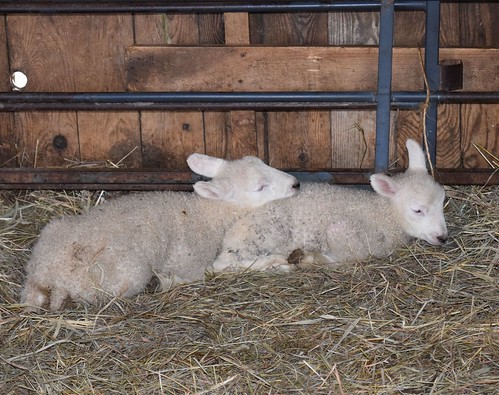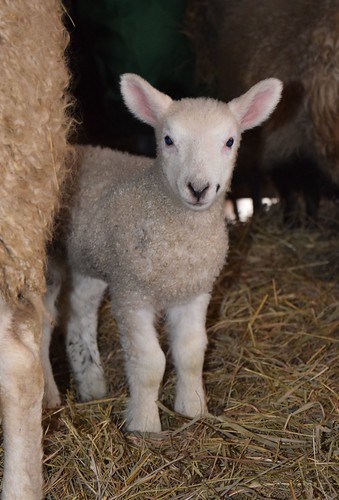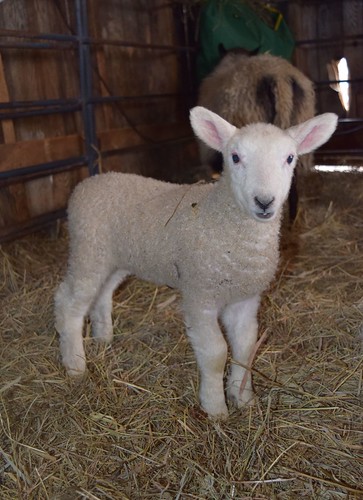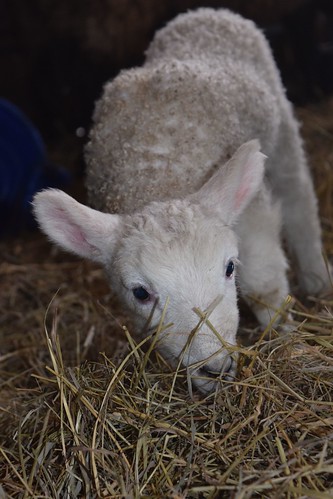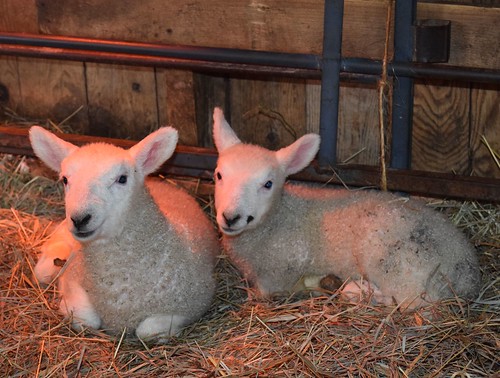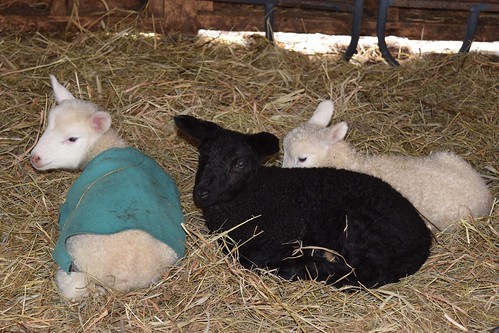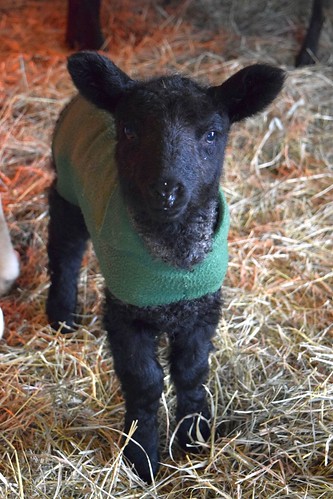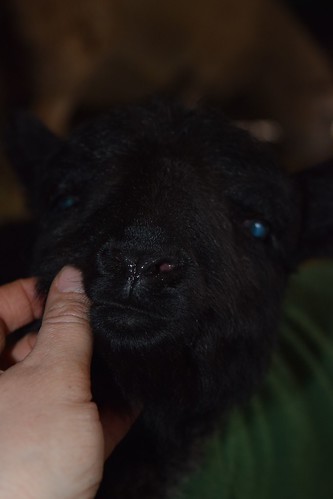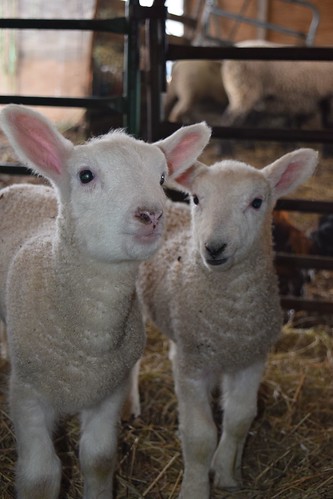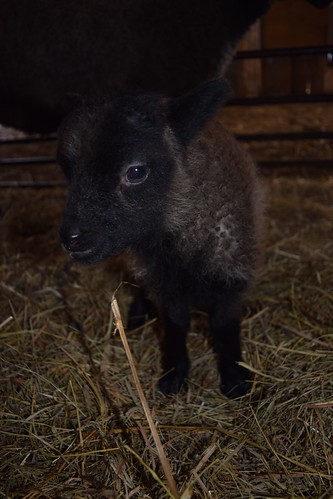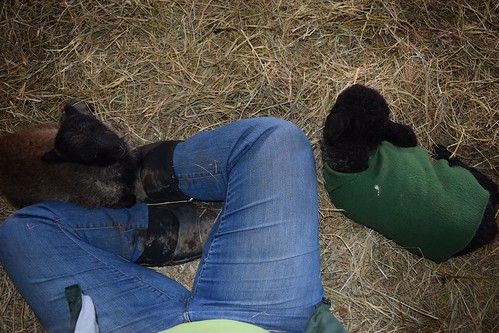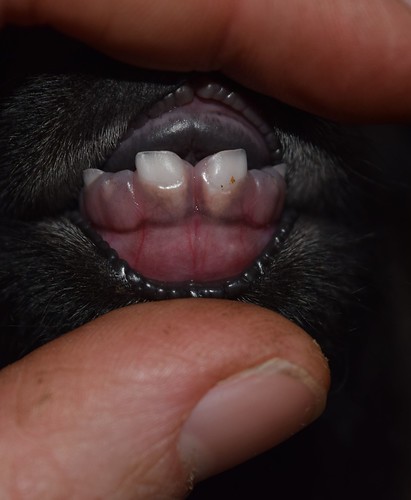purplequeenvt
Herd Master
This is our 2nd year breeding a few ewes for fall lambs. I don't remember off the top of my head how many we bred last year, but this year we exposed 10 and 6 settled.
It's a little tricky since our breeds don't usually breed out of season. We used CIDRs and PG600 to get them cycling. Last year we had twins and singles, but this year the ewes were given BoSe (we are in a selenium deficient area) prior to breeding.
They were due yesterday and 2 lambed right on schedule.
The first ewe, Shirley (a 2 1/2 yo Border Leicester) had twin ewes early in the morning. This was her first lambing. She did not get bred as a yearling and this was her chance to redeem herself. Safe to say she did.
The 2nd ewe, Jane, is also 2 1/2 yo BL. She had twins this spring. She gave us 2 white ewe lambs and a black ram lamb last night. Yes, triplets!
A 3rd ewe seemed to be in labor last night, but didn't seem overly serious about it so we let her be. No hard pushing, no cervical dilation, no water bags. This morning she was pushing more, but there was still no dilation. After manually trying to dilate her for a while, she was making no progress. The decision was made to put her down and try to save the lamb.
For those curious about how/why this decision was made, there are several factors:
1) it's the weekend so having a vet out to do a c-section is very expensive.
2) c-sections are hard on sheep and the ewes often don't survive. There was no guarantee that the lamb was alive and we would either end up with a ewe that could never be bred again or a dead ewe with meat that we couldn't use due to the medications.
3) a terminal c-section obviously means the ewe dies. Still no guarantee that the lamb will live, but you don't have a dead ewe with unsalvagable meat. This option sucks, but is often the best option.
I am not at home (on a trip out of state to meet my new niece!) and this was my sister's sheep so she needed to make the decision. She chose terminal c-section. She had a neighbor who knows livestock and our BIL helping. They managed to save a really nice silver ewe lamb (there was only the one). The lamb was 12 lbs and was trying to come out sideways, hence the problems. Sad as she is, my sister knows she made the right choice. One life was saved and the ewe's carcass won't be wasted.
The lamb is doing extremely well and is now a house lamb, at least for the next few days.
FUN FACT:
The first 2 ewes (the twins and trips) were bred to the same ram. We had a heat wave (90+) right before the rams went. Despite the heat AND the fact that he had really bad pneumonia (106 fever when we found him sick) right before going in with the girls, he managed to settle all 3 of his ewes, has a 250% lambing rate and 4 were girls. We are still waiting on his 3rd ewe (a crossbred).
3 more to go. Freyja, a Shetland, Valarie, a cross, and another BL. I can never remember that ewe's name, but she's really fat so I call her the Obesity Queen.
It's a little tricky since our breeds don't usually breed out of season. We used CIDRs and PG600 to get them cycling. Last year we had twins and singles, but this year the ewes were given BoSe (we are in a selenium deficient area) prior to breeding.
They were due yesterday and 2 lambed right on schedule.
The first ewe, Shirley (a 2 1/2 yo Border Leicester) had twin ewes early in the morning. This was her first lambing. She did not get bred as a yearling and this was her chance to redeem herself. Safe to say she did.
The 2nd ewe, Jane, is also 2 1/2 yo BL. She had twins this spring. She gave us 2 white ewe lambs and a black ram lamb last night. Yes, triplets!
A 3rd ewe seemed to be in labor last night, but didn't seem overly serious about it so we let her be. No hard pushing, no cervical dilation, no water bags. This morning she was pushing more, but there was still no dilation. After manually trying to dilate her for a while, she was making no progress. The decision was made to put her down and try to save the lamb.
For those curious about how/why this decision was made, there are several factors:
1) it's the weekend so having a vet out to do a c-section is very expensive.
2) c-sections are hard on sheep and the ewes often don't survive. There was no guarantee that the lamb was alive and we would either end up with a ewe that could never be bred again or a dead ewe with meat that we couldn't use due to the medications.
3) a terminal c-section obviously means the ewe dies. Still no guarantee that the lamb will live, but you don't have a dead ewe with unsalvagable meat. This option sucks, but is often the best option.
I am not at home (on a trip out of state to meet my new niece!) and this was my sister's sheep so she needed to make the decision. She chose terminal c-section. She had a neighbor who knows livestock and our BIL helping. They managed to save a really nice silver ewe lamb (there was only the one). The lamb was 12 lbs and was trying to come out sideways, hence the problems. Sad as she is, my sister knows she made the right choice. One life was saved and the ewe's carcass won't be wasted.
The lamb is doing extremely well and is now a house lamb, at least for the next few days.
FUN FACT:
The first 2 ewes (the twins and trips) were bred to the same ram. We had a heat wave (90+) right before the rams went. Despite the heat AND the fact that he had really bad pneumonia (106 fever when we found him sick) right before going in with the girls, he managed to settle all 3 of his ewes, has a 250% lambing rate and 4 were girls. We are still waiting on his 3rd ewe (a crossbred).
3 more to go. Freyja, a Shetland, Valarie, a cross, and another BL. I can never remember that ewe's name, but she's really fat so I call her the Obesity Queen.
Last edited:

